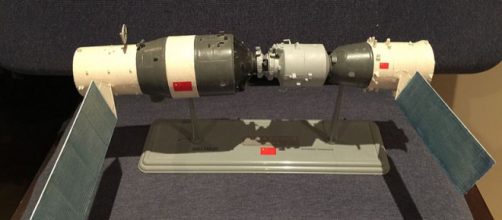china’s Tiangong-1 space lab was the country’s answer to the space programs of the West. It was launched it in 2011 and used by its astronauts for the last time in 2013. However, it has now gone out of control probably due to a shortage of fuel and is expected to come down as Space Debris by March. This debris will not pose problems to humans but could be an embarrassment for China.
CNN reports that the 40-foot space lab weighs 8.5-ton, and it was supposed to be the beginning of China’s efforts to launch a 20-ton space station by 2022. The ambitious plans included sending humans to the moon and, later, a rover to Mars, but it has suffered a setback.
What went wrong?
China wants to compete with others nations that have been involved in activities related to space research and it launched two space labs – the first one was Tiangong-1, or "Heavenly Palace," which was sent in 2011, followed by Tiangong-2 in 2016. The initial plan was to retire the first one and send it to its grave under controlled conditions. However, it stopped functioning on March 16, 2016, and China reported the matter to the UN in May.
It has not disclosed the reason for the malfunction but, in the opinion of an expert, one possible factor could be a shortage of fuel. The lab is now just another piece of space debris and is likely to crash land shortly. Of course, it is not expected to pose any danger to people on this planet because most of it will burn up during its descent.
Space debris is not new
The space lab Tiangong-1 has gone out of control and no one can predict its downward path because of various parameters like the weather and wind speeds. China expects it to hit the Earth by the end of March and has said that places in Canada and the United Kingdom would be safe.
Incidentally, space debris has been there ever since man began to send satellites to undertake scientific experiments and gain knowledge about the vast universe.
The main agenda has always been to explore the possibilities of surviving in an alien environment and colonize other planets. Obviously, there will be some amount of debris generated in the form of spent satellites and rocket stages. The United State and Russia have encountered this menace from time to time.
Some of the notable debris came from the US Skylab space station in 1979 when parts of it hit Western Australia.
Another was the debris from the 135-ton Russian space station Mir in 2001. Most of such unwanted material that have landed on the Earth in the last 50 years have settled down in the southern Pacific Ocean. There was no harm to any human being.
The Hindu adds that debris of this nature could damage existing satellites, and space stations. The numbers are believed to have added up to more than 24,000 out of which the maximum is from Russia (15000+) followed by America (6000+) and China (1000+).


